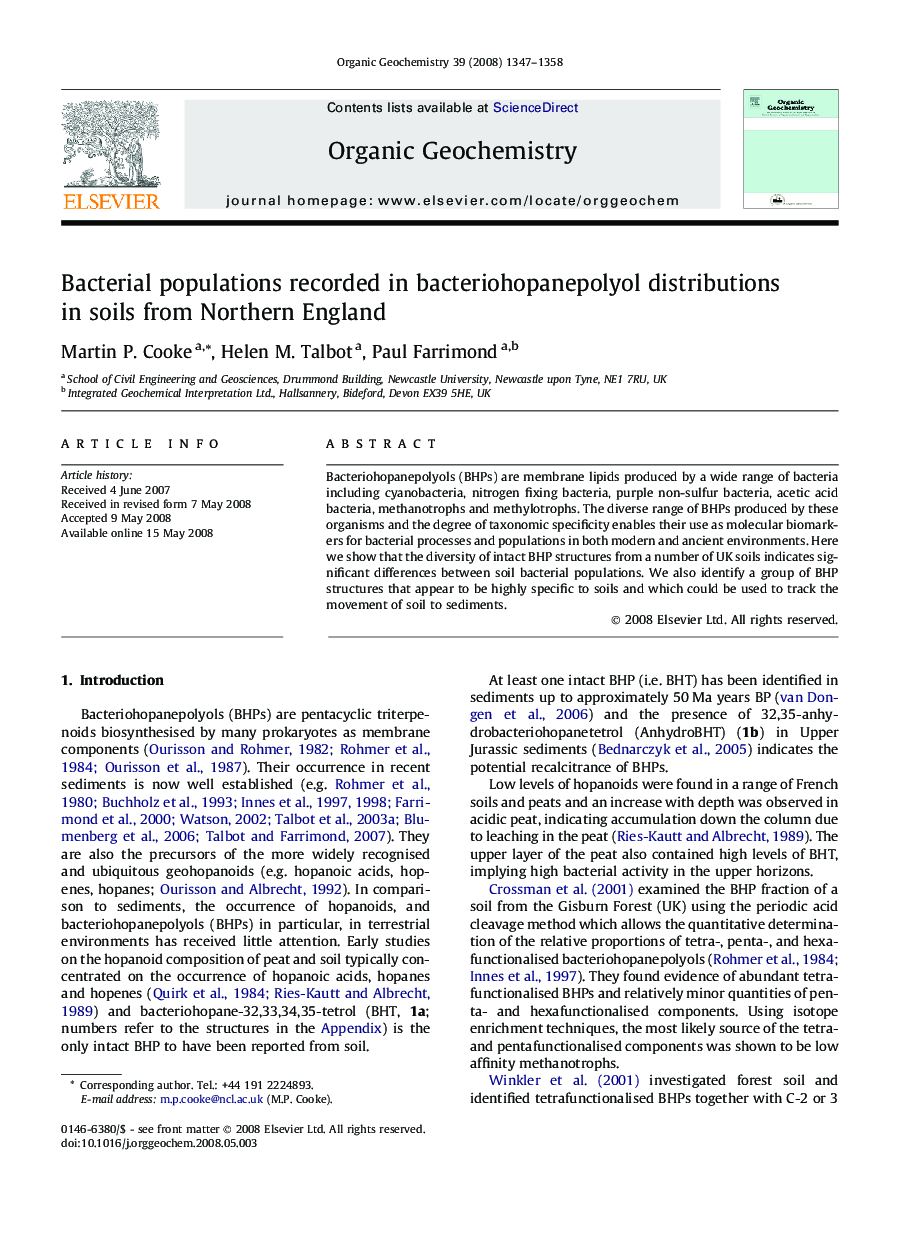| Article ID | Journal | Published Year | Pages | File Type |
|---|---|---|---|---|
| 5161962 | Organic Geochemistry | 2008 | 12 Pages |
Abstract
Bacteriohopanepolyols (BHPs) are membrane lipids produced by a wide range of bacteria including cyanobacteria, nitrogen fixing bacteria, purple non-sulfur bacteria, acetic acid bacteria, methanotrophs and methylotrophs. The diverse range of BHPs produced by these organisms and the degree of taxonomic specificity enables their use as molecular biomarkers for bacterial processes and populations in both modern and ancient environments. Here we show that the diversity of intact BHP structures from a number of UK soils indicates significant differences between soil bacterial populations. We also identify a group of BHP structures that appear to be highly specific to soils and which could be used to track the movement of soil to sediments.
Related Topics
Physical Sciences and Engineering
Chemistry
Organic Chemistry
Authors
Martin P. Cooke, Helen M. Talbot, Paul Farrimond,
